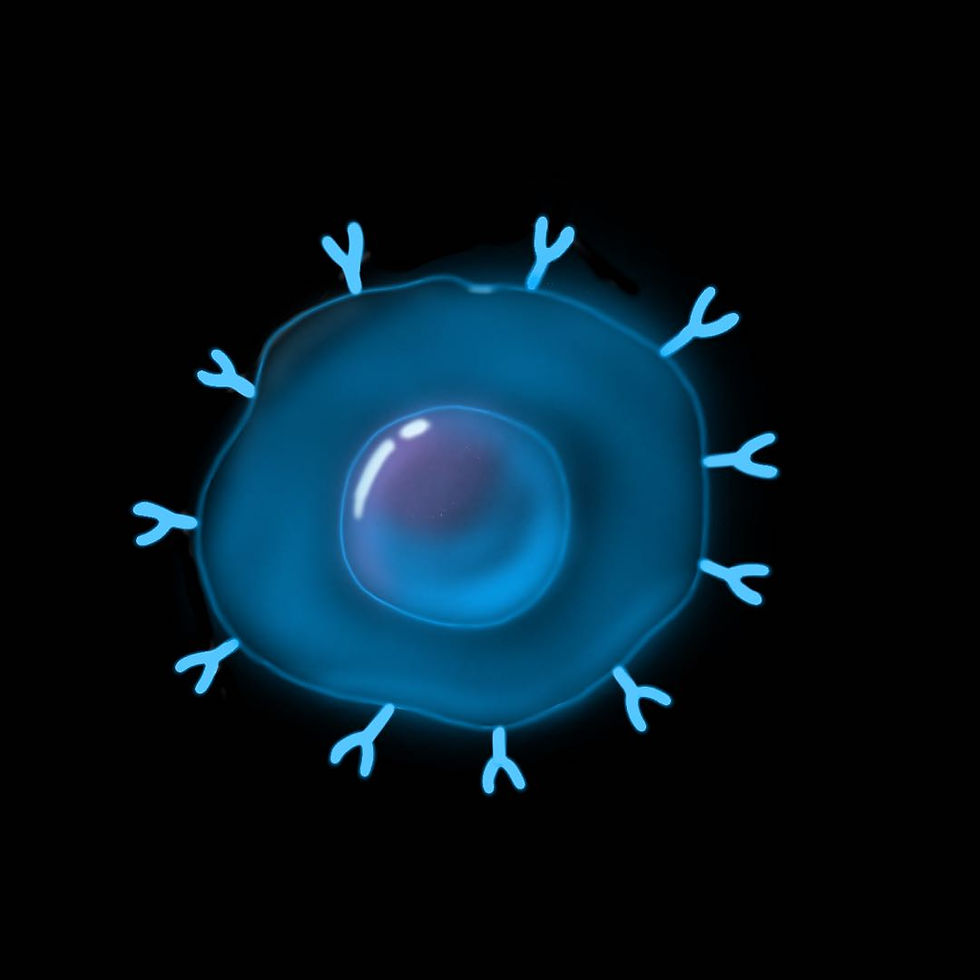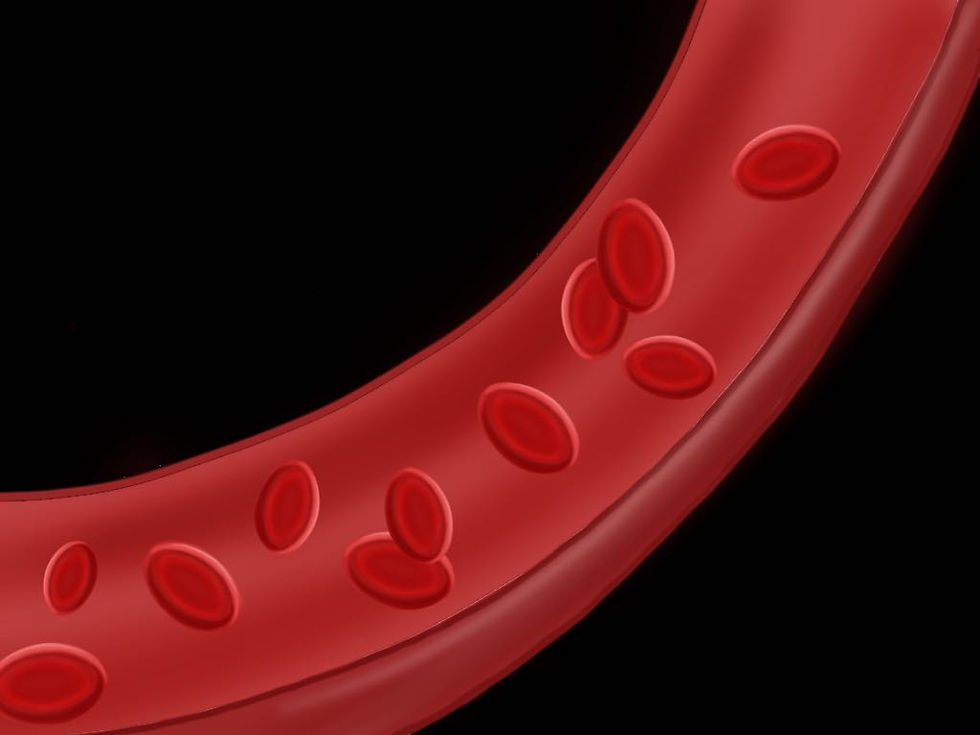B Cells and Antibodies: A Defensive Arsenal
- Science Holic
- Dec 6, 2023
- 2 min read
Author: Ellie Wang
Editors: Jaylen Peng, Ken Saito
Artist: Jade Li
Every cell type in the immune system has unique mechanisms to defend the body against foreign invaders called pathogens, and B cells are no exception. After antigens, foreign substances activate naïve or memory B cells. These specialized white blood cells become effector cells that produce proteins called antibodies, which bind to antigens, prompting specific other immune cells to respond to the invasion.

Each antibody comprises two heavy and two light polypeptide chains, forming a Y-shaped protein. Each type has a different amino acid sequence at the two ends at the top of the “Y,” so as a result, each one has a different structure and function. The five classes of antibodies— all prefixed by the abbreviation “Ig” for “immunoglobulin”— are IgA, IgD, IgE, IgG, and IgM. IgM antibodies are found in blood and act as the primary immune responses at the first exposure to antigens. They are the first to develop on B cells' surfaces, functioning as receptors for detecting antigens. B cells with only IgM antibodies are called immature naïve B cells. IgD antibodies are similar to IgM but are secreted into the blood in much lower amounts and function mainly as B cell surface receptors and maturation factors. With the additional IgD antibodies, immature naive B cells become mature naive B cells.

IgG antibodies are the most common type, making up about 70-75% of the body’s antibodies. They exist mainly in blood and tissue fluids and are involved in secondary immune responses mediated by the immune cells. Neutrophils and macrophages bind to the tail end of the IgG antibody, causing them to phagocytose or ingest the pathogen that the top of the antibody is attached to. IgA, found in secretions such as saliva, tears, mucus, breast milk, intestinal fluid, and respiratory fluid, protects against ingested and inhaled pathogens. Since the body can still transport IgM antibodies into secretions with less efficiency, those with IgA deficiencies aren’t impacted too significantly. IgE antibodies exist in skin, lungs, and mucus membranes, where they are bound to receptors on the surfaces of mast cells in tissues and on those of basophils in the blood. When antigens bind to those antibody receptors, those cells secrete various chemicals. One is histamine, an amine that causes nearby blood vessels to dilate and more easily allow immune cells to enter the infected area. Mast cells also secrete compounds that attract and activate eosinophil cells, which can bind to IgE antibodies and target parasites, especially if they are coated in IgE antibodies.
Although B cells and antibodies are essential components of our immune systems that can be used to help combat many conditions such as organ transplant rejection, cancer, rheumatoid arthritis, heart disease, multiple sclerosis, and others, they could also mistake the body’s normal cells for antigens, causing allergies and autoimmune diseases. Allergies can be treated with antihistamines, but research into the numerous autoimmune diseases people suffer from is still ongoing.
Citations:
Alberts, Bruce. “B Cells and Antibodies.” Molecular Biology of the Cell - NCBI Bookshelf, 2002,
www.ncbi.nlm.nih.gov/books/NBK26884.
Patel, Raj H. “Biochemistry, Histamine.” StatPearls - NCBI Bookshelf, 1 May 2023,
www.ncbi.nlm.nih.gov/books/NBK557790.
Professional, Cleveland Clinic Medical. “Antibodies.” Cleveland Clinic,
my.clevelandclinic.org/health/body/22971-antibodies.



Comments